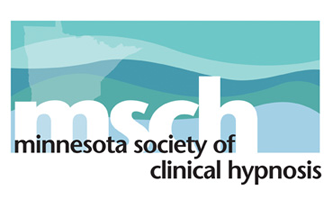Duluth Psychological Clinic
Abstract
These are a few comments regarding Ego State Therapy (EST) and what a person is and does in the context of one’s internal selves. The dialogical nature of the interactions of ego states described by Wendy is similar to what occurs in everyday thinking. Thinking occurs in imagined internal conversation that then is enriched and firmly structured in an external conversation. The dialogical self theory proposes that these internal and external conversations take place in front of an internal audience consisting of what might be described as a generalized other (how we sound to the community we live) that is accompanied by our critical self (how we sound to ourselves). Each person, according to the dialogical concept of a person, consists of an internalized mini-society that reflects one’s external social environment. The generalized other and critical self or selves account for the boundaries described by Wendy in EST. One of the important questions is how and what is addressed as one’s true self and how that center is given resilience in ego strengthening procedures. My thinking is that this is not always clear, and I propose a possibility that the growth and development of a true self, or spiritual center of a person, is in the direction of self-control. However, self-control is a lifetime endeavor that is only achievable with reason and rationality. Maturity and balance in one’s life is achieved in connectedness to others, self-control, and reasonableness. Reason is to cognition, then, as love is to emotion and implies openness and a willingness to be vulnerable. Openness to others requires a willingness and commitment to be vulnerable.
Ego States to Selves — and Back
It was a treat to participate in the Zoomed Fifth Shep Myers Memorial Workshop. Wendy presented her latest thinking of Ego State Therapy, Clinical Hypnosis and Ego State Therapy: The Healing Power of Working with States of the Self, which was a welcome update and well done. There was some wrestling with the Zoom Technology which was well managed by Jennifer Stoos. My first Zoom workshop was a positive experience to the despite of my initial uncertainty and minor technical glitches.
Some thinking cued by the ego state therapy materials concerned the recent results of my own thinking about what a self is and how it does what it does. The resulting book Constituting Selves: Psychology’s Pragmatic Horizon was — finally — finished and published two weeks earlier (Duus, 2020). The pressing question for me, of course, is how does the concept of ego states fit with more general psychological ideas of self and selves. Can any clarity be added to ego states, states of self, by lights the eleven separate studies addressing different sides of the self-aporetic, the problem of the self? The goal of this short paper is to make some observations concerning ego states as presented by Wendy. It was nice to be updated on Wendy’s latest thinking of ego states therapy and hypnosis.
My attention was drawn to the dialogical nature of ego states described. It turns out that everyday thinking is dialogical. What I mean by that is that one’s thinking consists of an internally generated conversation of oneself initiating an exchange or conversation with an alter-I, an internalized other that is more than a concept of that person and is actually an internalized alter-I, or alter ego state. Such imagined conversations may go through several iterations, that is, repeated several times. Then, if the opportunity arises the person herself is engaged in a external conversation that solidifies the strand of thinking. In the course of thinking there are several alterations between imagined internal conversations and actual executed conversations. Good thinking that is more than one’s rehearsal of their own prejudices, which may be what many people take for thinking, also requires periods of withdrawal and quietness to collect from one’s experience and personal knowledge relating to the considered situation that are the target of the internally initiated dialogues. Thinking then consists of alternating episodes of quiet withdrawal, internal conversations, and actual social conversations following the targeted issue of concern. Everyday thinking then is not so different from the ego states described in ego state therapy. This is the form of normal everyday thinking.
A second observation is that ego states, as describe in Ego State Therapy (EST), is congruent with, or convergent with Dialogical Self Theory. Convergence may be a better way to describe two independent traditions of thought evolving to agreement and points to a scientific character of establishing reality. Dialogical theory describes mental processing of our social relations to consist of multiple selves, or I-positions, that is an internalized mini-society reflecting one’s social relationships. A person initiates an imagined conversation between oneself and an internalized alter-I. An alter-I that is an internalized construction of another person one has or had a relationship that can be a past, an ongoing present, or imagined future relation with another person. Such imagined conversations occur in the presence of an internalized general other that is one’s internalized understanding of the social infrastructure that is the audience for the conversation, one’s own critical self, and the significant other alter-I’s of significant others such as family or origin members. Alter-I’s and ego states seem to be equivalent in every respect. EST specifically asserts that trauma enhances the internalized presence of perpetrators as well as significant others. The nature of the audience and of critical others accounts for the boundaries described by Wendy between ego states, in her vocabulary, and alter-I’s in the Dialogical Self vocabulary. The imagined internalized conversations in our everyday thinking is verified and firmly structured in historical presence in actual conversations in the everyday world. This kind of reality check is surmised to be necessary to maintain personal and social balance. When such normal reality checking does not take place or is prevented by an aspect of the internalized mini-society, such a person incurs the variety of disorders described by EST. The point is that EST does integrate rather nicely with other traditions of thinking about selves, in particular Dialogical Self Theory. The result is that EST does not stick out as a lonely and perhaps heroic herald of healing and mental health. For myself, EST and hypnosis are so closely integrated that one implies the other (Lemke, 2005; Watkins & Watkins, 1997).
A third problem is how to address something we intuitively recognize as a true self. Thisis a conceptual problem that clinicians ‘feel the way’ to what is sensed as a patient’s true self or, perhaps, spiritual center. Importantly, it is necessary to recognize one has a self only when in relation with another person. In this sense an individual person is a fiction. It follows that too great an emphasis on the individual leads to limited closed relationships characterized by instability and suspiciousness. Such relationships may oscillate between intense identity and xenophobic relations such as an extreme authoritarianism and, its reflection, narcissism. Note that relationships continue to be essential to being a person (a self), but this essential nature of relationship is obscured, not destroyed, by an over emphasis on individualism. The point is that a true authentic self can seem to be an unchanging core of a person that a therapist can facilitate a patient identifying and then to connect in order to further a healing process and personal growth.
If one is a person only in relation to another person, then one’s self is a changing phenomenon that moves with changing relations and events. Following this reasoning, the idea of a core self that is relatively unchanging and which provides foundation for an integrated stable person may not fit the reality of psychological processes. If the idea a true self is untenable and does not fit what a self is and what it does, what does account for an increased balance and stability of a patient’s well-being and improved flourishing (the capacity to achieve some satisfaction and success in day-to-day living). The proposal is that a person (one’s self) is anchored in the body and is embodied. Secondly, it is present I-experience, and so is transient and then becomes a historical empirical self that evolves to an ego state, an I-position, the continues to accrue experiential material in vague generally circumscribed periods of one’s life such as growing up in one’s family, a student, intimate relationships, bullying incidents, abusive incidents of broken trust, and on. Thirdly, a person is open to participate in relations with others that is directed by their experience and knowledge of a particular relationship. Fourth and equally important, a person is open to reason and to making sense of their experience in their community. This is another way of saying that successful adaptive functioning results in a context of openness to the larger community. To be open to one’s community is to be open to reason and the affective tone of the community. The affective tone created by pandemic concerns, for example. A first-person presence, a self, moves with the changing relation.
How do clinical psychological interventions appear to positively affect such a reality? How does a therapist intervene to facilitate the healing growth of a patient to their future? My suggestion is that most already do. But what we are effectively doing may not be what we think we are doing. In my clinical practice what is actually happening to facilitate the patient’s growth is often not what I thought was happening, and, for me, openness to such uncertainties and belief in the patient is part of effective practice. Equally likely is that many therapists have already anticipated and work within the understanding of self and selves suggested. Hypnosis works well to stabilize a relationship with a patient that can then be something of a conduit to ground the patient in a sense of her body, focus them on the immediate presence of an internal or external relationship, and engage their sense of reason and community.
Summary
These are some thoughts the workshop engaged for me, and may be of some interest to others. Wendy’s workshop presentation was timely and useful to me in my first Zoomed conference. The dynamic interactions of ego states, states of selves, are the forms in which everyday thinking occurs, and it may be helpful to consider ego state interactions as a form of thinking but perhaps not always good reasoning and thinking. The second observation is that ego state therapy is congruent, and even similar, with Dialogical Self Theory that illustrates that EST is not a lonely theoretical development of psychoanalysis. It converges with Dialogical Self Theory derived independently of the psychoanalytic tradition. This development enhances the scientific credibility of EST. Finally, what can be referred to as one’s true self is a changing entity that is in the physical body, is in the present, exists in openness to another person, and is openly oriented through reason to one’s community. The practical question is, if this is the reality a therapist recognizes, what does the hypnosis protocol look like when working with a patient in an EST context? This is a question for further and separate discussion.
References
Duus, R. (2020). Constituting Selves: Psychology’s Pragmatic Horizon. Switzerland AG: Springer Nature. doi: https://doi.org/10.1007/978–3-030–39017–4
Lemke, W. (2005, January). Utilizing hypnosis and ego-staate therapy to facilitate healthy adaptive differentiation in the treatment of sexual disorders. American Journal of Clinical Hypnosis, 47(3), 179–190.
Watkins, J. G., & Watkins, H. H. (1997). Ego States: Theory and therapy. New York: W.W.Norton and Company.



